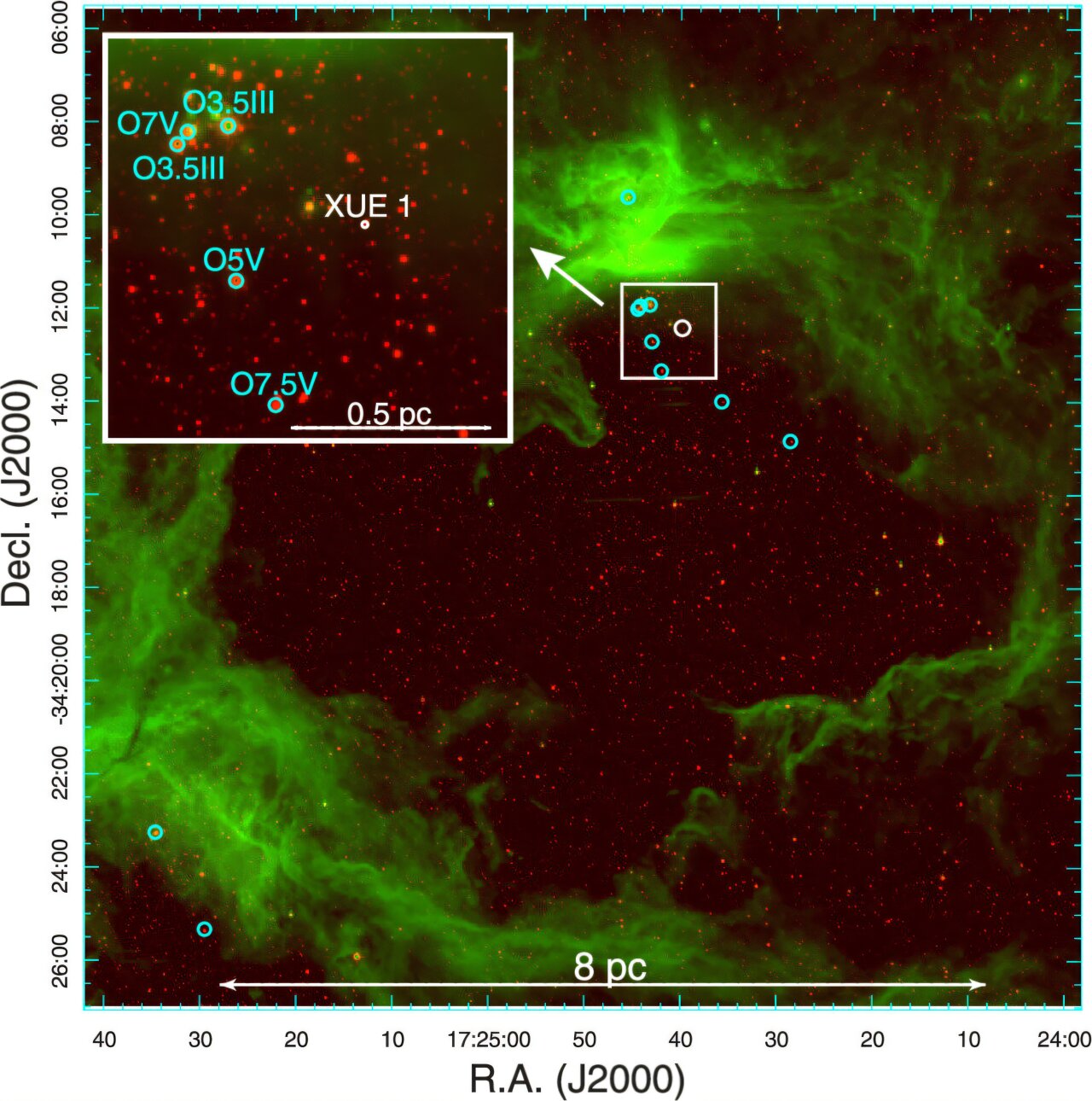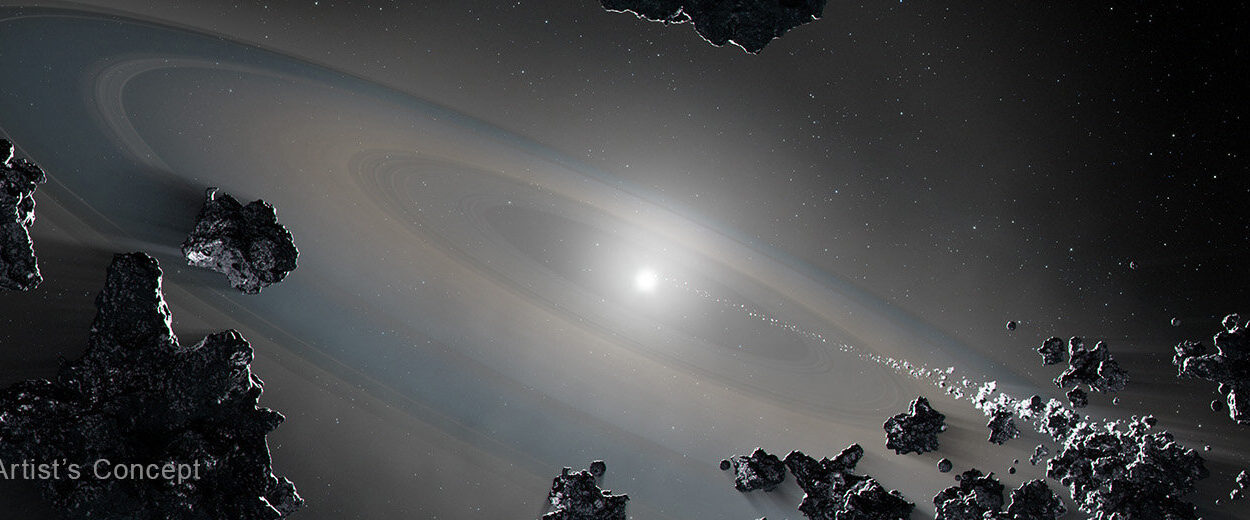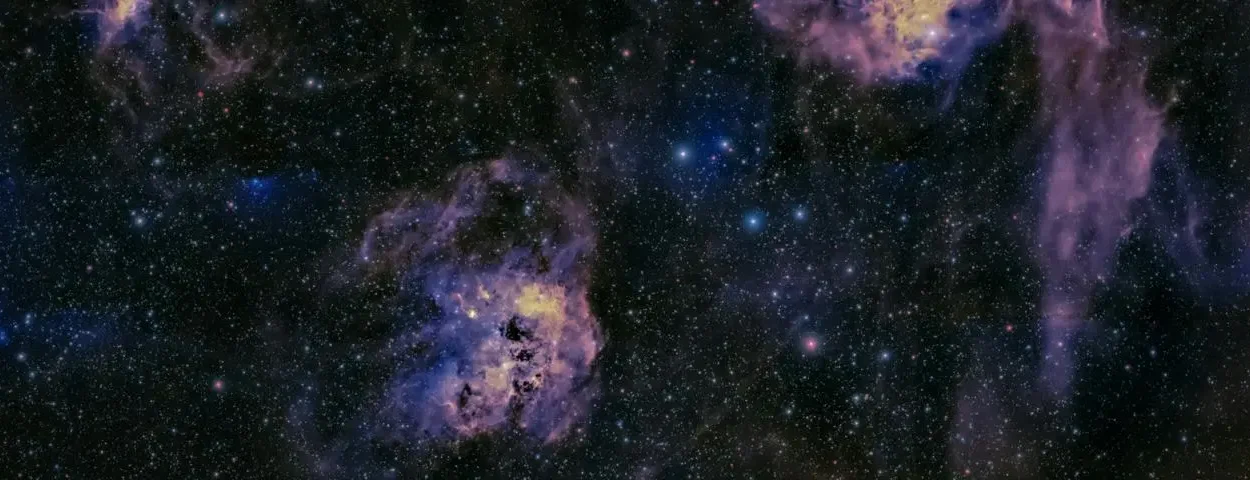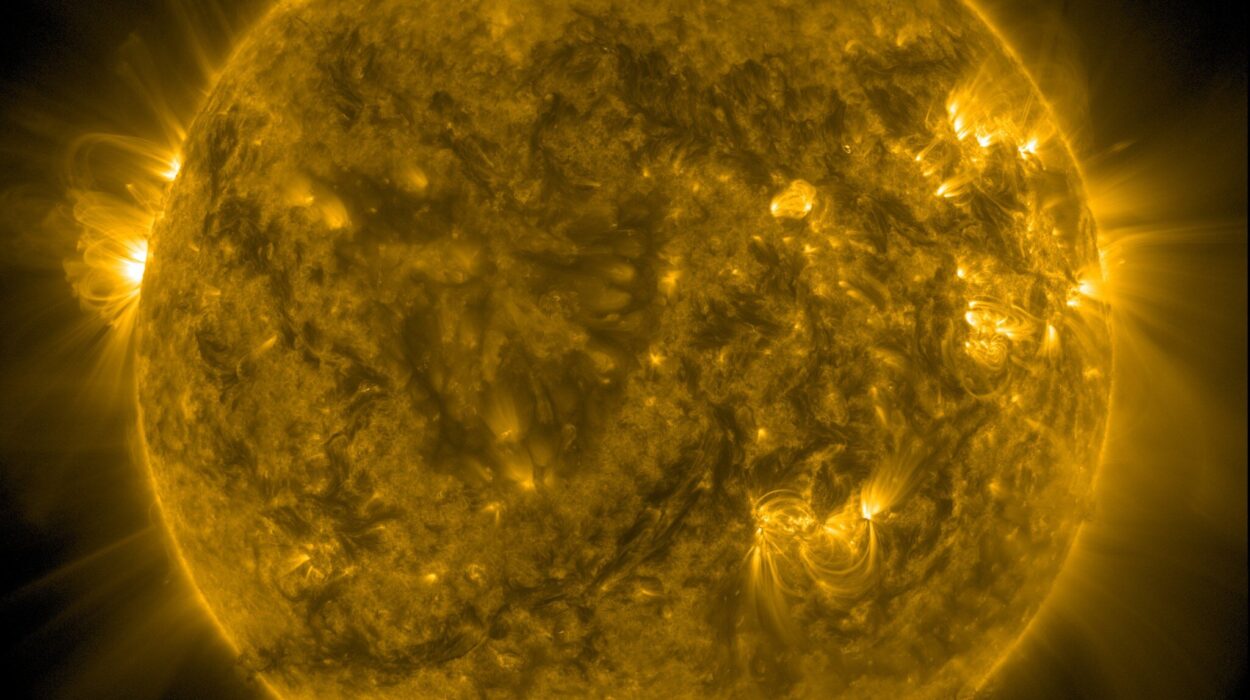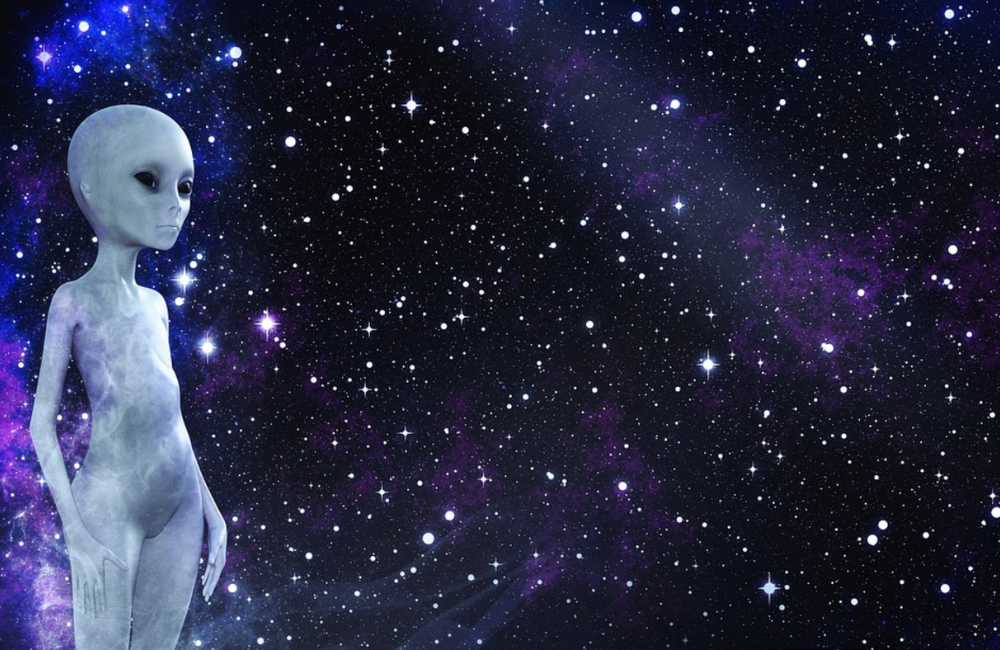Across the vast stretches of our galaxy lie glowing nurseries of stars—tumultuous regions where gravity gathers clouds of dust and gas, igniting the fires of stellar birth. Yet amidst this celestial turmoil, an even more delicate process begins: the formation of planets. For decades, astronomers have marveled at how rocky worlds like Earth and gas giants like Jupiter emerge from the swirling disks of material that orbit young stars. But one question has long lingered: Can this delicate process unfold even in the harshest corners of the cosmos, where ultraviolet (UV) radiation blasts through space like an unforgiving wind?
Now, thanks to the unprecedented eyes of NASA’s James Webb Space Telescope (JWST), an international team led by Penn State researchers has found a compelling answer—yes, it can. In a groundbreaking study published on May 20 in The Astrophysical Journal, astronomers explored the young star XUE 1 in the Lobster Nebula, one of the most extreme stellar nurseries in the Milky Way. Against all odds, they discovered that the seeds of planets—the very building blocks of alien worlds—can survive and even thrive in UV-blasted environments.
The Curious Case of XUE 1: A Star Amid Chaos
Located some 5,500 light-years from Earth, XUE 1 is an unassuming young star with a mass similar to our Sun’s. But its neighborhood is anything but peaceful. It lies in the heart of NGC 6357, better known as the Lobster Nebula—a sprawling cosmic crucible that hosts some of the most massive stars in the galaxy. These giants blaze with intense UV radiation, an invisible but potent form of light that carries more energy than what our eyes can see. On Earth, UV rays are filtered by the atmosphere; in space, they are unleashed in full force.
Astronomers have long assumed that such intense UV radiation would strip away the fragile material that forms planets around nearby stars, dooming protoplanetary disks to premature evaporation. In this light, the discovery around XUE 1 is nothing short of revolutionary.
Using the JWST’s unparalleled infrared capabilities and advanced thermochemical modeling, the research team was able to peer into the dusty, gaseous halo encircling XUE 1. What they found overturned expectations: this disk—despite being bombarded by UV radiation from nearby massive stars—was still intact, compact, and brimming with the potential for planet formation.
Inside a Cosmic Cradle: A Disk That Defies the Odds
Protoplanetary disks are essentially stellar leftovers—dense rings of gas and dust that swirl around a newborn star. Over millions of years, these particles collide, stick together, and gradually form pebbles, boulders, and eventually, planets. Think of it as cosmic alchemy: dust becomes rock, rock becomes planet, and from the chaos of creation emerges the architecture of solar systems.
What makes the disk around XUE 1 so astonishing is not just its existence in a hostile environment, but its richness. The JWST detected key molecular signatures in the disk, including water vapor, carbon monoxide (CO), carbon dioxide (CO₂), hydrogen cyanide (HCN), and acetylene (C₂H₂)—a veritable cocktail of compounds crucial for planetary development and potentially for life.
These molecules are not merely byproducts of star formation; they’re raw ingredients for atmospheres, oceans, and perhaps even prebiotic chemistry. As Konstantin Getman, co-author and research professor at Penn State, explained, “The detection of such reservoirs of dust and gas suggests that the fundamental building blocks for planet formation can exist even in environments with extreme ultraviolet radiation.”
In terms of mass, the disk could yield enough rocky material to form at least ten Mercury-sized planets. That’s a powerful affirmation that planetary genesis is not limited to serene cosmic neighborhoods—it can unfold even under fire.
Reading the Radiation: Clues in Light and Shadow
But the study didn’t stop at identifying ingredients. The team went further, analyzing the disk’s structure and how it has been shaped by its radiation-rich environment. Through a process known as spectroscopic tracing—where light is used to infer the presence or absence of certain molecules—they noticed something intriguing.
Molecules typically associated with the outer regions of protoplanetary disks were missing. This absence wasn’t due to lack of sensitivity or measurement error—it was a sign that those parts of the disk had likely been stripped away by UV radiation. What remained was a compact, inner disk stretching only about 10 astronomical units (AU)—roughly the distance from the Sun to Saturn.
This compactness offers a double-edged insight. On one hand, it confirms that intense UV light does indeed erode the outer zones of a disk, likely preventing the formation of gas giants like Jupiter in such environments. On the other hand, it suggests that rocky, Earth-like planets might still emerge within this protected inner sanctum.
“These findings support the idea that planets form around stars even when the natal disk is exposed to strong external radiation,” said Eric Feigelson, senior scholar and professor of astronomy and astrophysics at Penn State. “This helps explain why astronomers are finding that planetary systems are very common around other stars.”
A Universe of Possibilities: Implications for Planet Formation Theory
The implications of this study ripple across the field of astrophysics. For decades, models of planet formation have largely been built on observations of star-forming regions close to Earth—like the Taurus or Ophiuchus clouds—where the environment is relatively calm. These regions, however, may not be typical. Massive, high-UV nurseries like the Lobster Nebula are far more common in the galaxy.
By showing that protoplanetary disks—and potentially planets—can survive even in these harsh settings, the research redefines our assumptions about where and how planets can form. It widens the cosmic playing field.
It also offers new explanations for why exoplanets are so ubiquitous. In the last two decades, astronomers have discovered over 5,000 exoplanets orbiting distant stars, with wildly diverse sizes, compositions, and orbital paths. Some of these systems are compact, with multiple rocky planets tightly orbiting their star—configurations not unlike what might emerge from a disk like XUE 1’s.
The JWST findings give a physical context for these discoveries and hint at the resilience of planet formation—a process that, once started, seems determined to complete itself, even under duress.
JWST’s Legacy: A New Age of Cosmic Discovery
The success of this study underscores the transformative capabilities of the James Webb Space Telescope. Equipped with a suite of infrared instruments designed to cut through cosmic dust, JWST has made it possible to examine the molecular composition of protoplanetary disks with extraordinary precision.
Unlike earlier telescopes that relied on indirect measurements, JWST can directly observe the spectral fingerprints of chemicals across different wavelengths, even in obscured regions that previously eluded study. This makes it the most powerful tool yet for understanding not just where planets form, but how.
As lead author Bayron Portilla-Revelo noted, “This research underscores the transformative capabilities of NASA’s James Webb satellite observatory in probing the intricacies of planet formation and highlights the resilience of protoplanetary disks in the face of formidable environmental challenges.”
The Road Ahead: New Frontiers in Planetary Science
The findings from XUE 1 are just the beginning. Astronomers now plan to use JWST and complementary ground-based telescopes to examine more stars in the Lobster Nebula and similar regions. Each new disk observed, each molecule mapped, brings us closer to understanding the universal recipe for planetary creation.
Future studies will aim to track the evolution of such disks over time: How long do they survive in high-radiation zones? What kinds of planets—if any—eventually form? Could such planets be habitable, or even harbor life?
Additionally, with new missions like the Nancy Grace Roman Space Telescope and upgrades to ALMA (the Atacama Large Millimeter/submillimeter Array), scientists will gain even sharper eyes and ears to capture the music of the stars—and the planets born around them.
Conclusion: The Resilience of Creation
In the grand narrative of the universe, stars are born in chaos, and planets rise from dust. The story of XUE 1 reminds us that even in the most hostile cradles of creation, the cosmic machinery of life and structure continues to turn.
It’s a poetic irony: in a nebula blasted by the light of giants, a humble star may quietly give rise to new worlds.
And in the flicker of that distant light, carried across 5,500 years of space-time and captured by humanity’s most advanced telescope, we see the echoes of our own origins—and the promise of countless others yet to come.
Reference: Bayron Portilla-Revelo et al, XUE: Thermochemical Modeling Suggests a Compact and Gas-depleted Structure for a Distant, Irradiated Protoplanetary Disk, The Astrophysical Journal (2025). DOI: 10.3847/1538-4357/adc91d
